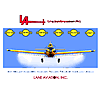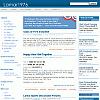Further
Reading
PEW Study Finds Searcher Misperceptions
January 25, 2005 - AP
A new study by the Pew Internet and American Life Project has found that only 1 in 6 users of Internet search engines can tell the difference between unbiased search results and paid advertisements. All of the major search engines return a mix of regular results (based solely on relevance to the search terms entered) and sponsored links (for which a Web site had paid advertising fees). Only 38% of Web searchers are aware of the distinction, and of those only 47% can always tell which are paid -- even though they're usually labeled by the search engines. PEW researcher Deborah Fallows says: "We're still in the infancy of the Internet. People are still kind of so pleased that they can go there, ask for something and get an answer that it's kind of not on their radar screen to look in a very scrutinizing way to see what's in the background there."
SEARCH ENGINES Second Only to E-Mail in Internet Use
August 2004 - Pew Internet & American Life Project
About 107 million people -- 84% of online users in the U.S. -- have used a search engine, according to a recent phone survey by the Pew Internet & American Life Project. More than two thirds of Internet users report employing a search engine at least a couple of times a week, and on any given day, more than half seek information on the Web using a search engine. Pew reports that Web search ranks second only to e-mail as the most popular online activity, and 87% of search engine users say they find the information they want most of the time.
As reported in Newsscan Daily, August 12, 2004
Companies
Missing the Mark on Teen Marketing
U.S. teenagers and young adults represent a coveted demographic market for many businesses, but advertisers
are failing to tailor their messages to teens' media consumption habits... Teenagers and young adults spend almost 17 hours a week on the Internet -- six times
the national average -- but advertisers are still pouring most of their money into TV commercials....
(McKinsey Quarterly 2004 No. 4)




